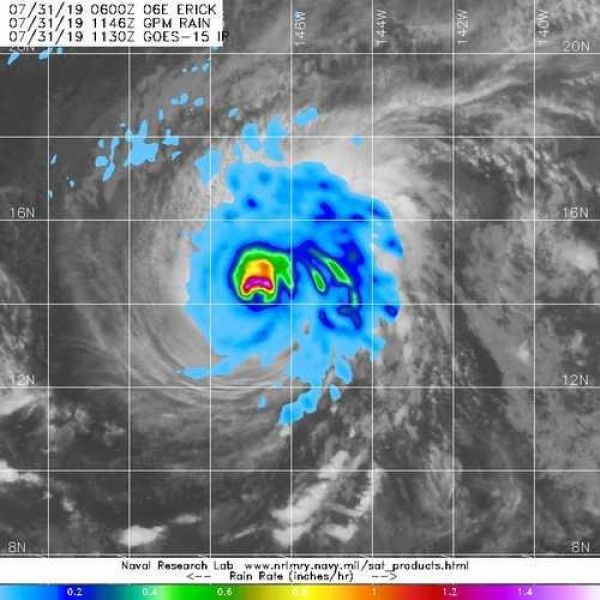Erick is a major hurricane in the Eastern Pacific Ocean and is a category 3 hurricane on the Saffir-Simpson Hurricane Wind Scale.
NASA’s Aqua satellite analyzed Erick on July 30 at 7:17 a.m. EDT (1117 UTC) using the Atmospheric Infrared Sounder or AIRS instrument. The stronger the storms, the higher they extend into the troposphere, and they have the colder cloud temperatures. AIRS found coldest cloud top temperatures as cold as or colder than minus 63 degrees Fahrenheit (minus 53 degrees Celsius) in a large area around the center.
The Global Precipitation Measurement mission or GPM core satellite passed over Hurricane Erick at 7:46 a.m. EDT (1146 UTC) on July 31. GPM found the heaviest rainfall was around the northern eyewall of the center of circulation. There, rain was falling at a rate of over 40 mm (about 1.6 inches) per hour. GPM is a joint mission between NASA and the Japan Aerospace Exploration Agency, JAXA.
Read more at: NASA/Goddard Space Flight Center
The GPM core satellite passed over Hurricane Erick at 7:46 a.m. EDT (1146 UTC) on July 31. GPM found the heaviest rainfall (pink) was around the northern eyewall of the center of circulation. There, rain was falling at a rate of over 40 mm (about 1.6 inches) per hour. (Photo Credit: NASA/NRL)


